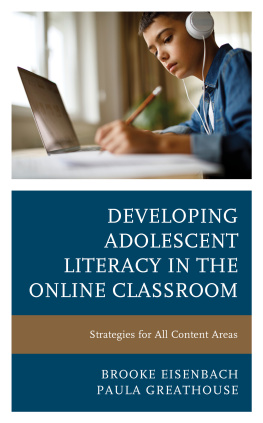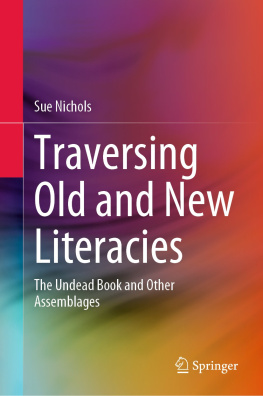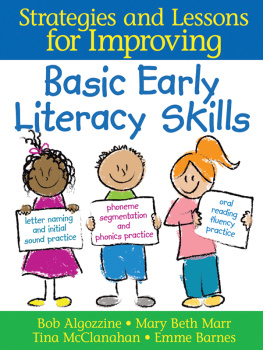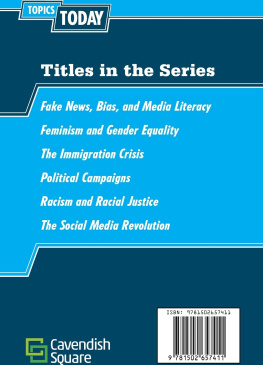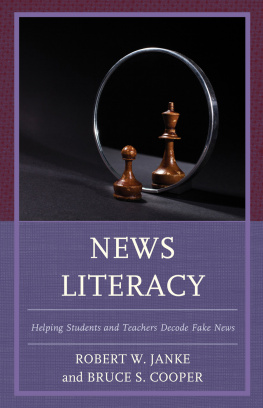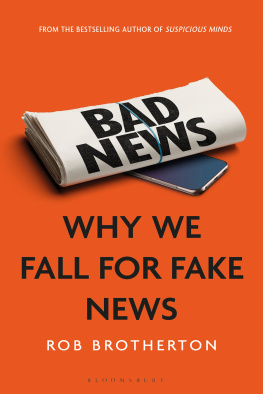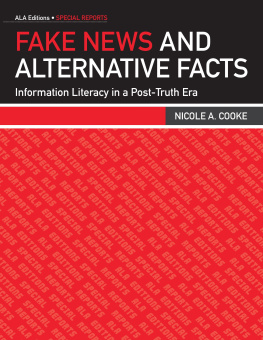BUILDING NEWS LITERACY
Lessons for Teaching Critical Thinking Skills in Elementary and Middle Schools
Tom Bober

Copyright 2021 by Tom Bober
All rights reserved. No part of this publication may be reproduced, stored in a retrieval system, or transmitted, in any form or by any means, electronic, mechanical, photocopying, recording, or otherwise, except for the inclusion of brief quotations in a review, without prior permission in writing from the publisher.
Library of Congress Cataloging in Publication Control Number: 2020043516
ISBN: 978-1-4408-7515-1 (print)
978-1-4408-7516-8 (ebook)
25 24 23 22 21 1 2 3 4 5
This book is also available as an eBook.
Libraries Unlimited
An Imprint of ABC-CLIO, LLC
ABC-CLIO, LLC
147 Castilian Drive
Santa Barbara, California 93117
www.abc-clio.com
This book is printed on acid-free paper 
Manufactured in the United States of America
To my daughters, Emily and Jessica, who have listened to more news with me than anyone.
Contents
Acknowledgments
The world of news has changed so much over the past several years, and I feel like I have changed over the many months that elapsed as I worked to write this book. It gave me the opportunity to articulate my thoughts about the importance of news literacy for upper elementary and middle school students in ways that I have not previously had the opportunity to do. For that, I am grateful and have people I must thank.
First, thank you to my upper elementary teachers who bring me into conversations with them and their students about information literacy and news literacy. The talks years ago about corroboration, reliability, and credibility certainly revealed the need for these literacies to be addressed and sent me down this path.
Thank you also to David Paige and Jane Cullina at School Library Connection who brought me on for two years as the Curriculum Connections Editor. That opportunity pushed me to grow as a school librarian and develop the ideas that were emerging in my own library. The inspiration for this book comes from a monthly post written during that time, and I couldnt be more grateful for the encouragement and good fortune to have worked with you.
The biggest thank-you goes to Sharon Coatney, my editor for this book. After working with me on my first title, she thought I had another book in me. After a healthy conversation and some time to reflect, I agreed. Having someone believe you can do something before even you do is a wonderful feeling.
Speaking of having people believe in me, I must finally thank my family: my daughters, who regularly listen to me talk through opportunities and options; and my wife, Jen, who agrees to share her own expertise and perspective by reading every word I write. I could not do these things without your support and belief in me.
News Literacy in Elementary and Middle Schools?
Recently, I walked the playground during an upper elementary recess and eavesdropped on conversations. I wondered if I could hear evidence of my students being aware of what was going on in the news. It didnt take me long to find that evidence: it was all over the playground.
One student was talking about some recent flooding that had happened locally and, in a jealous tone, noted that some students got to stay home a day because a school district had made the decision to call off school for student safety. Another student was joking about a political figure with a surprising amount of detail, which revealed to me that he had information that had only recently been reported. A third student was proudly sharing information about her favorite movie series. She knew more than what would be found in a commercial. Her part of the conversation with friends contained box office information and announcements about upcoming movies in the series.
Later, I approached these three students and asked them where they had heard the news that they shared. The anecdotal results showed that all their information came from different places. Upon asking more widely, though, patterns appeared. These upper elementary students were getting news information by viewing or listening to news with a parent or other trusted adult, hearing news shared with them by a trusted adult or peer, or seeking out news on topics that interested them using personal or family devices.
Next, I visited our middle school lunchroom to see how sixth- and seventh-grade students news experiences compared. I was surprised to find the number of students who had ready information about news of the day.
More than one shared news about an earthquake that had happened the day before in another country. Several shared current political stories. A recent school shooting was concerning to another table of students that I spoke with.
It appeared that there were similarities in awareness of news between these two groups, but as I dug deeper, differences also appeared. Several middle school students shared that they learned about news by receiving notifications on their phones. Asked if they read these news reports, most shared that they did not read further than the headline and maybe a few lines of the article. Others saw news on social media apps, despite being below the required age to have an account. One student, when asked about news, shared his love of conspiracy theories and the YouTuber he often watched.
We live in a world where our upper elementary and middle school students are more aware than ever of what is going on around them. Gone are the days when young childrens view of the world would be shaped primarily by what they overheard between adults at the dinner table. Sure, the adults are still talking, and the children are still listening, but now there are so many more places to hear about the news events of the day.
Many of those places do not include the adults in childrens lives, and because of that, we cannot be there to help them interpret all of the news they hear. Instead, we need to give them a skill set that encourages them to identify, interpret, and evaluate the news they hear and connect it to their own lives.
That is a tall order. These are things that not all adults are adept at doing. So why not wait until later in middle school or even high school? Why not wait until they are older and more mature? The truth is that we should not wait. If our children and students are taking in news on a regular (even daily) basis, we should be giving them the tools to deal with that information.
Our upper elementary and middle school students are in a transition phase as to how they receive information and news. At some pointand it is different for every childmany go from their parents or other adults in their lives being in control of the news they hear to news being shared with them by social media, apps, or peers. This transition makes it a critical time to instill a set of skills that will allow children to be sophisticated consumers of news and information, both at this moment in their lives and moving forward. This is the time to teach news literacy.
WHERE DO ELEMENTARY AND MIDDLE SCHOOL STUDENTS GET THEIR NEWS?
Between YouTube, podcasts, news websites, news being shared on social media, news apps, and pop-up notifications on phones and devices, elementary and middle school children with their own devices have many more opportunities to hear news, and to hear opinions about that news, than was available in the past.
They also are exposed to those news sources that adults in their lives put in front of them. Parents may have news on in the home or car radio that students passively hear. Teachers may subscribe to Time for Kids or online news services like Newsela. School or public librarians can house subscriptions to Sports Illustrated Kids or other topical periodicals that share timely news targeted to younger readers.
Next page

